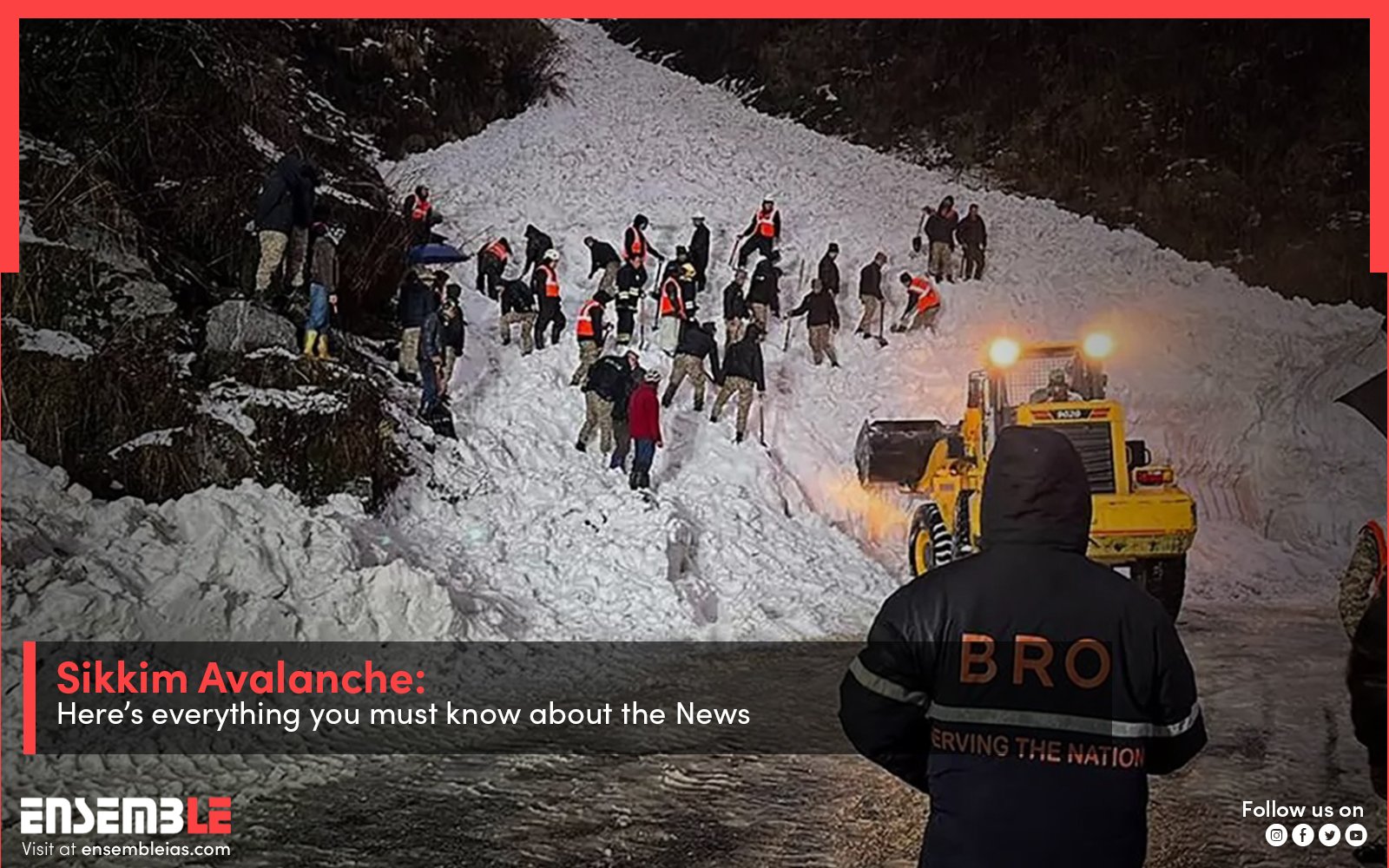On Tuesday afternoon, an avalanche struck the Gangtok-Nathu La road in Sikkim, leaving seven tourists dead and a dozen others injured. The incident occurred around 12:15 pm at the 14th mile on Jawaharlal Nehru Road, which connects Gangtok to Nathu La pass.
Why is the news all about?
The Sikkim avalanche is a significant news event as it resulted in the loss of several lives and caused injuries to many others. Additionally, the incident has highlighted the dangers of avalanches, especially in the mountainous regions of India. The avalanche is reported to have occurred at a time when about 150 tourists were in the area. As per the Army, about 5-6 vehicles along with 20-30 tourists on the way to Nathu La are feared to have been stuck under the heavy snow.
Rescue Operations underway
The army, NDRF, and other rescue teams launched a massive search and rescue operation to locate and rescue the trapped tourists. By 3 PM, 14 persons were rescued and taken to nearby Army medical facilities, while seven others were unfortunately declared dead. Rescue operations had to be suspended due to heavy snowfall in the evening.
Understanding Avalanche
– An avalanche is a sudden and rapid flow of snow down a slope, often caused by external factors such as heavy snowfall or an earthquake.
– Avalanches can be extremely dangerous, and people caught in them can suffer injuries, hypothermia, and even death.
What causes Avalanche and how to prevent them?
– Avalanches are primarily caused by external factors such as heavy snowfall, human activity, or natural disasters such as earthquakes.
– However, certain factors like the slope’s angle, snowpack instability, and weather conditions can also contribute to avalanches.
To prevent avalanches, it is crucial to understand the risks and take precautions such as staying on marked trails, avoiding steep slopes, and using proper avalanche safety gear like shovels and beacons.
There should not be any doubt that the Sikkim avalanche tragedy has highlighted the dangers of avalanches and the need for caution when visiting mountainous regions.




